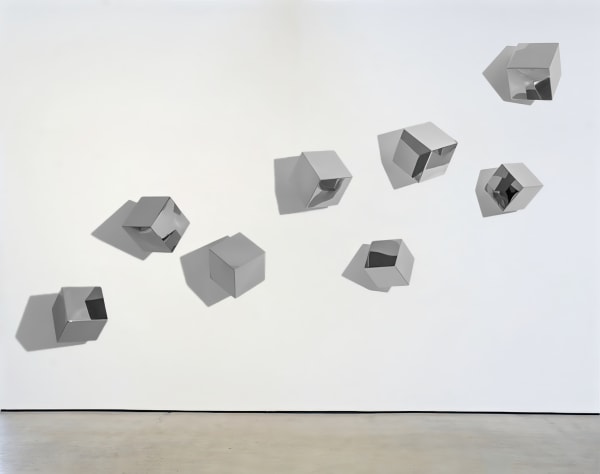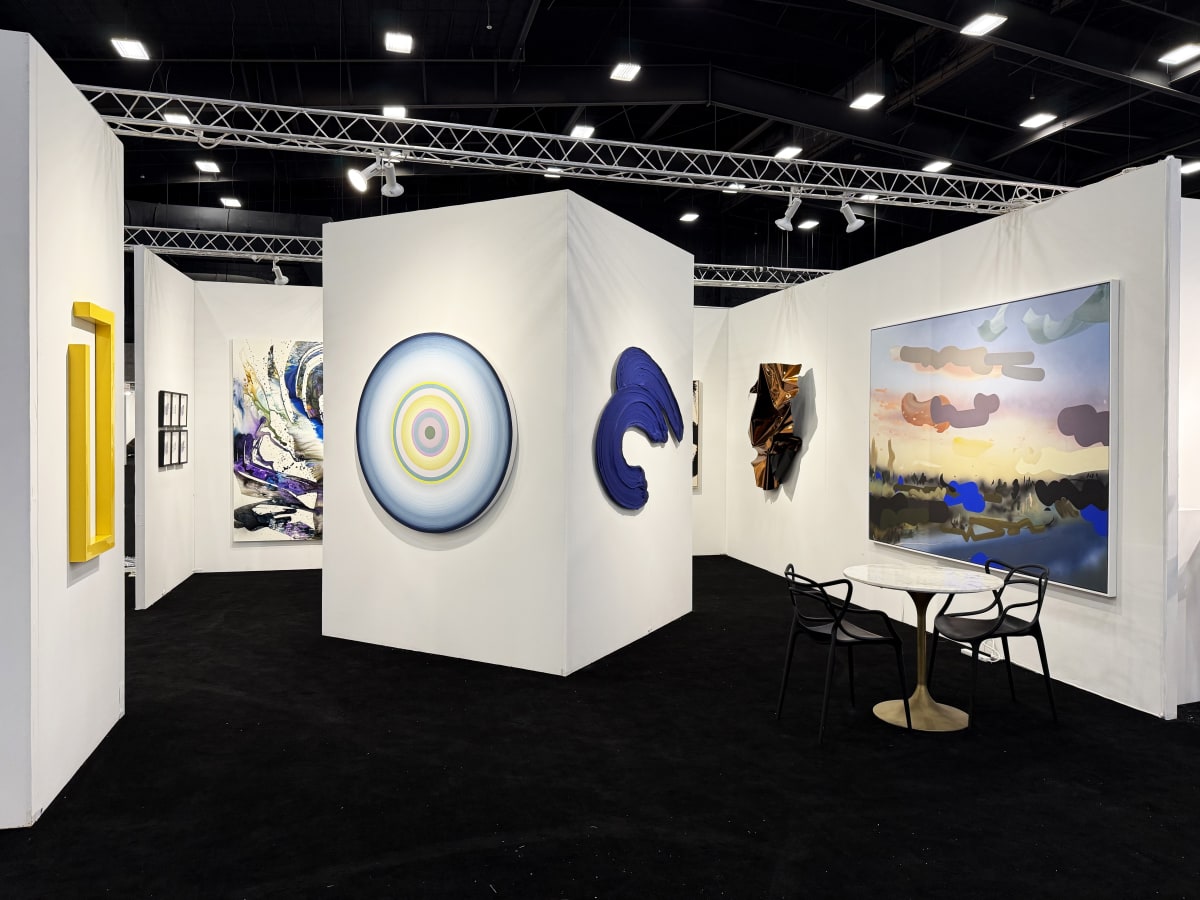Lori Cozen-Geller American, b. 1952
“Lori Cozen-Geller formulates her sculptures out of a familiar, vital, and relatively recent artistic language. But in creating these objects, she has reasoned well outside the norms of this vocabulary and the genre it informs, almost to the point of heresy. Cozen-Geller is indeed a minimalist, following in the wake of hundreds of principally (if by no means exclusively) American artists who have pared down their formal vocabularies to essences. But Cozen-Geller wants something different out of large, simple shapes than do most of her minimalist predecessors and cohorts: she wants meaning. Symbolic meaning. Iconography, that is, as recognizable (if not necessarily self-evident) to the untrained viewer as a stop sign – albeit far less literal.
The minimalist tradition, now almost a half-century old, presumes that the reductive, geometrically constituted objects that comprise what we know as “minimal art” do not communicate anything beyond the physical, or at least optical, experience of their existence. What that experience is may shift, from, say, the obdurate materiality of a Carl Andre or the relentless arithmetical logic of a Sol LeWitt to the perceptual elusiveness of a Robert Irwin; but it is not supposed to assume any sort of inferential resonance, much less narrative content. “What you see is what you see,” cautioned Frank Stella at the outset of his career, when he was painting some of the early landmarks of the minimalist movement and helping to establish the movement’s philosophy and ethos.
Cozen-Geller not only accepts the inevitable associativity of things – the referentiability of non-referential art objects – but exploits it. It would be a stretch to say that she harnesses it to her own message(s); if she were bent on conveying specific, prosaic information, she would have to engage a pictoriality far less oblique than the non-objective language of pure, reductivist geometry she invariably employs. Rather, in conjuring, say, the memory of her father, Cozen-Geller does not need to paint a portrait of the man, but only to refer to his absence by displacing a shape out of another, larger shape.In this manner, she bespeaks her feelings through an intuitive but lucid and simple approach to formal relationships – an approach that allows her viewers to respond with similar intuition.
To be sure, there is a weighty, ever-present “thingness” to Cozen-Geller’s things. They occupy space; they demand to be looked at. Furthermore, their identity as objects is underscored by their vivid self-containment: although they are planar, and many of them are displayed on the wall as if paintings, they are not images in any shape, manner, or form. They are objects. They present themselves with the same initial take-it-or-leave-it materiality that animates – and adds gravitas (not to mention gravity) to – the slabs of John McCracken, the bubbles of Craig Kauffman, and the formidable objects realized by other southern Californian “finish/fetish” object-makers. But, like her fellow Angelenos, exploiting the synthetic, high-tech materials and methods associated with the California lifestyle – she colors her sculptures and reliefs with opaque coats of car-body paint – Cozen-Geller wants to make the materials she works with so emphatically present that they ultimately become absent. Taken for granted. Beside the point. As expected and “natural”-seeming as, well, the paint on cars.
By amplifying the decorous and the ordinary in her work – effectively pushing her works into the realm of the everyday – Cozen-Geller challenges herself, and us, to maintain the “special condition” of art. These objects finally present themselves as art because they manifest something transcendent. You can’t sit on them or use them; you can only look at them. And you can’t stop looking at them. They call attention to – well, not to themselves so much as to what they are saying. They attempt to reach across a verbal-visual divide to tell stories – or, rather, to elaborate on aspects of the human, and natural, condition. The works signal loss, alienation, socialization, isolation, displacement, discovery, self-awareness, self-denial, and other circumstantial phenomena – circumstantial not just to humans, but in some way or other to all sentient beings.
This is a lot to invest art with, and a lot to presume it will communicate. But, then, it is a lot to presume of the audience, of its sensitivity, of its willingness to address and investigate these issues, and particularly of its ability to be spurred to such investigation by big, simple shapes modified with quirky, provocative details. But this is what David Smith did. This is what Alexander Calder did. And this is what Tony Smith did, his paterfamilial relationship to the minimalist sculptors notwithstanding. However elemental, Cozen-Geller’s language – that is, her visual grammar – is at least as traditional as it is unanticipated.
There is no guarantee that we will fully comprehend Cozen-Geller’s “message.” But her message is not her primary concern, and need not be ours. Cozen-Geller seeks to provoke not our recognition of her specific impetus, but our grasp of form itself in the emotional context she gives it. In this respect, she breaks with minimalism and harks back to an earlier attitude about abstraction: the belief, maintained by the very inventors of abstract art, that, rather than telling stories, providing decoration, or physically defining space and substance, abstraction invokes sensation. What we see, Lori Cozen-Geller believes, is what we feel.” -Art Critic Peter Frank























